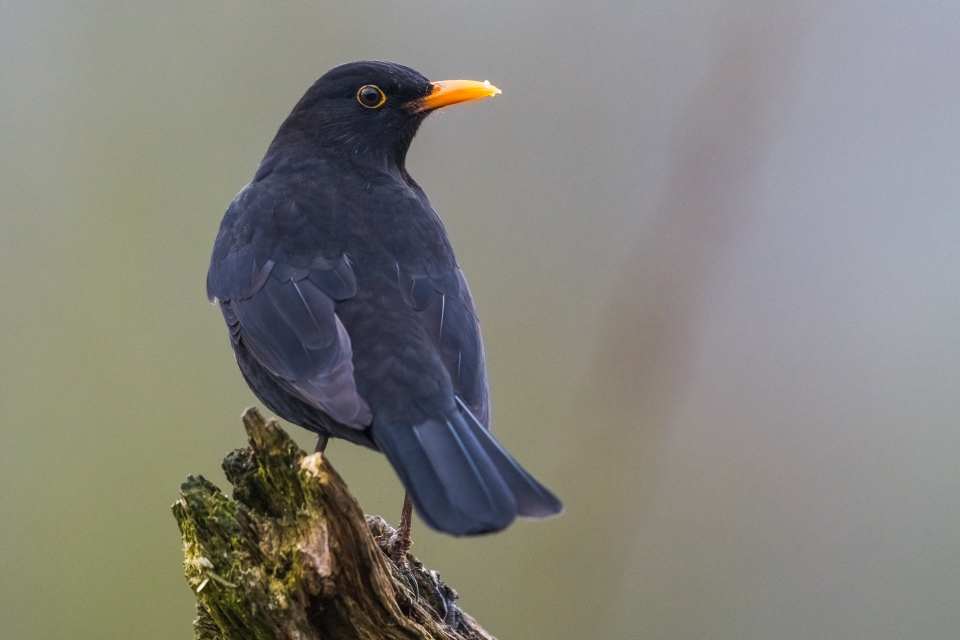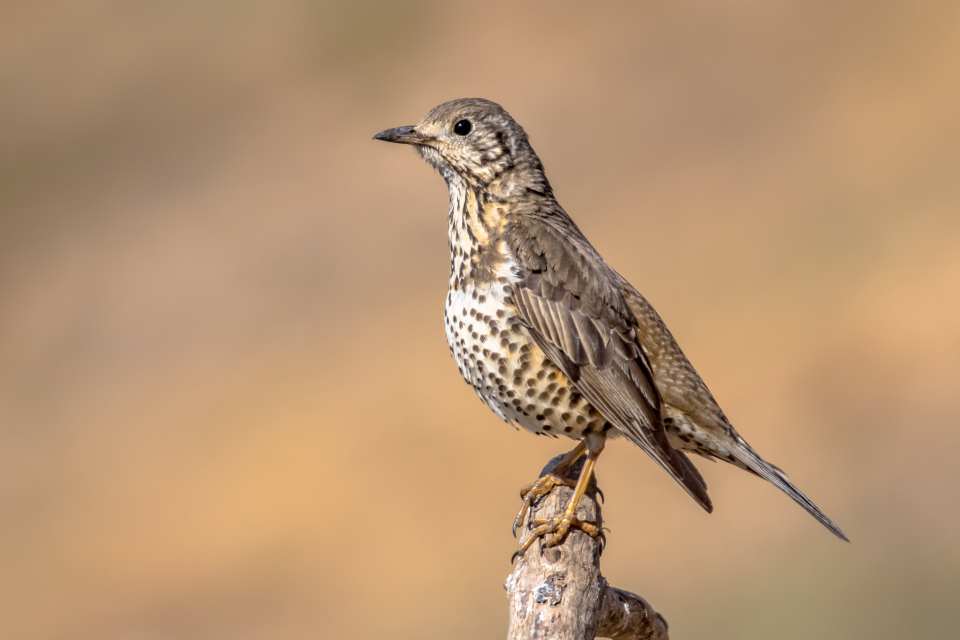Species Guide: Blackbird (Turdus merula)
Family: Turdidae
The Blackbird is amongst the most common birds in the British Isles and is a frequent garden visitor famed for its singing and love of the sunshine.
According to folktales, the Blackbird has evil and supernatural powers, and similarly to the Crow forbodes ill fortune. It’s a good job most people don’t believe this sort of thing anymore! You may also have heard the nursery rhyme of four and twenty blackbirds being baked in a pie, and one flying out when the pie was cut and pecking off the king’s nose. If nothing else, this does demonstrate that Blackbirds have been resident in the U.K. for a long time, with records supporting observations back in Saxon times.
Appearance
The Blackbird (Turdus merula) is a medium-sized thrush with a sleek, rounded appearance. The male is entirely glossy black with a bright yellow-orange bill and eye-ring, while the female is dark brown with a slightly lighter throat and breast, often streaked. Juveniles resemble females but are more mottled. They have a graceful stance, long tail, and dark legs.
Diet
The Blackbird is a ground forager and bounces around the ground turning over leaves and pushing its beak into the soil in search of insects, earthworms, caterpillars, as well as fruit and berries. They will also frequently visit bird tables.

HABITAT
Their natural habitat is deciduous woodland, they can also be found in scrub, farmland, and the aforementioned urban environments. They can be found across the U.K. except on higher ground.

Summer
Resident
Winter
Introduced
Ad Space
Behavior
While the adult male Blackbird is entirely black as its name suggests, the female is brown. Juveniles are also brown but with flashes of copper. The male has a bright yellow beak and matching eyering, whereas the female beak is more brown.
Depending on the weather, they can start breeding as early as March through to July. They nest close to the ground and the female takes responsibility for building the nest from twigs and grass; favoring bushes or small trees as the location. They can have up to 3 broods each year, each with up to 5 eggs. The female also takes responsibility for incubating the eggs which hatch after two weeks and are ready to fledge after another 14 to 16 days.
Their life expectancy is typically three years, albeit they have been known to live much longer, with the oldest recorded being 15 years! It is estimated that there are over 10 million blackbirds in the British Isles alone.

Biometrics2
Adults weigh up to 122g with a wing length of up to 138mm.2
NATURAL PREDATORS
They are preyed upon by sparrowhawks and goshawks, as well as being susceptible to predation by mammals such as foxes and in particular domestic cats.
Conservation Status
The Blackbird has adapted very well to the loss of natural habitat and is now most frequently seen in urban rather than rural environments.
U.K.
Conservation Status

Global
Conservation Status

Related Articles



Ad Space
Citations
- By Cactus26, MPF – Updated from File:TurdusMerulaDistribution.png to reflect updated taxonomy; adapted from:Josep del Hoyo et al. 2005. Handbook of the Birds of the World (HBW). Vol. 10 Cuckoo-shrikes to Thrushes: 645. Lynx Edicions, Barcelona ISBN 84-87334-72-5D. W. Snow & C. M. Perrins. The Birds of the Western Palearctic Vol. 2. Oxford, ISBN 0-19-854099-XVerpa svartþrestir á Íslandi? (breeding status in Iceland)Keller, V., et al. 2020. European Breeding Bird Atlas 2: 716-717. EBCC & Lynx Edicions, Barcelona ISBN 978-84-16728-38-1P. J. Higgins et al. Handbook of Australian, New Zealand and Antarctic Birds (HANZAB). Volume 7: Boatbill to Starlings. Oxford University Press, Melbourne, ISBN 0-19-553996-6 (introduced populations), CC BY-SA 3.0, [Accessed 17/10/2025] ↩︎
- Featherbase [Accessed 17/10/2025] ↩︎







